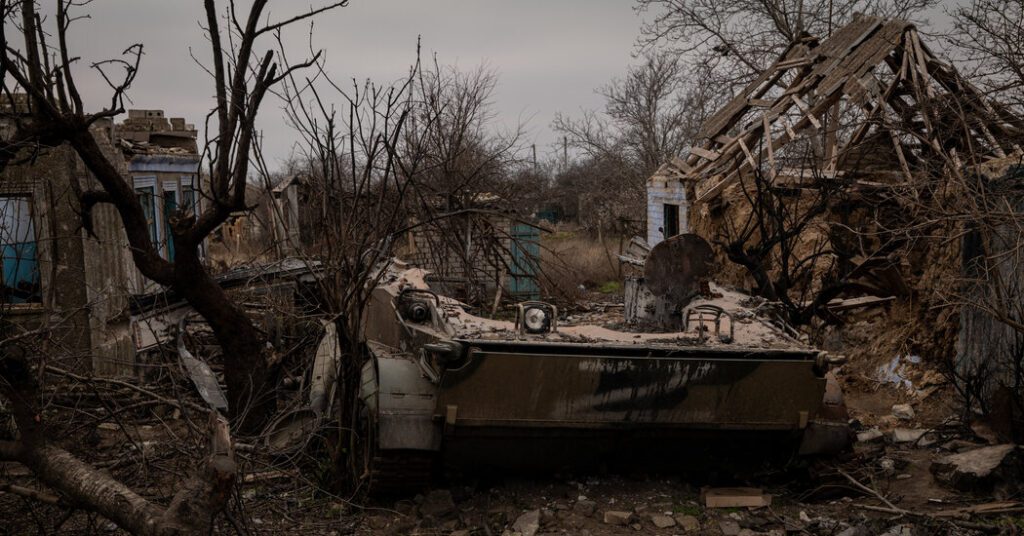The next phase of the Ukraine War, a new Russian offensive and a potential Ukrainian counteroffensive, seems all but inevitable for late winter or early spring. The logic of escalation is prevailing, the mutual belief that no peace deal is possible until the other side understands that it can’t win.
The Ukrainian hope for how this escalation ends was sketched out by Mykhailo Podolyak, a key adviser to President Volodymyr Zelensky, in a recent interview with Bruno Macaes for The New Statesman. “Russia will embark on some minor offensive actions in a short period of time,” Macaes summarizes. “A lot of manpower will be lost. After that, it will face a series of significant defeats.” This will lead to Russian unraveling: Major cities will be lost, some kind of military collapse will follow, and then there will be “uncontrolled political transformation” within the Russian Federation itself.
Podolyak doesn’t predict that all of this will happen this spring, suggesting that the timing depends on Western support. But with that support escalating, if he’s right about the likelihood of total victory we should see its beginnings in the looming campaign, with real territorial turnover in Ukraine’s favor and signs of turmoil inside Russia.
If that’s what we end up seeing, then the American strategy will need to focus on the dilemmas of success: The perils of a desperate Russian nuclear gamble, spillover risks from any internal Russian power struggle and possible dangers from a still-more-nationalist successor regime.
But if we don’t see signs of Podolyak’s prophecy’s fulfillment, if mutual escalation yields again to stalemate (I am bracketing the dire but hopefully unlikely scenario where the Russians threaten Kyiv again), then analysts predicting a long war will look more prescient. And the Biden administration will need to decide whether a grinding conflict extending toward 2025 and beyond is in the American national interest.
In a new paper from RAND, Samuel Charap and Miranda Priebe offer a strong case that the answer should be no. There are, they acknowledge, benefits for the United States from a drawn-out struggle. If a long war very gradually goes the Ukrainian way, more Ukrainians would be liberated from Russian occupation, and a post-conflict Ukraine would be potentially more economically viable. A long war would impose continuing punishment on Russia for its aggression, shoring up the norm against cross-border aggression, and it would encourage increased military spending among our European allies and the continued decoupling of Western economies from Russian energy, both of which are clearly in the American interest.
But against those benefits you have to count the extensive costs. A long war maintains the current dangerously elevated risk of NATO-Russia conflict and nuclear brinkmanship indefinitely into the future. A long war requires constant flows of money and weapons, threatening the depletion of American military resources at a time when we’re escalating our rivalry with China.
A long war kills lots of people, Ukrainian as well as Russian, and threatens to leave a post-conflict Ukraine in ever-worsening economic and demographic shape. A long war is a drag on global economic growth, and its continued impact on energy and food prices would cost lives in Europe and in poorer countries around the world.
And a long war leaves America ill-equipped to pivot, not just to face a Chinese threat but against whatever other surprises the 21st century might yet have in store.
To the authors — and, I suspect, to the Biden administration — the possibility of these risks extending far into the 2020s makes a strong case for de-escalation. But of course any de-escalation requires a Russian willingness to negotiate and make real concessions, which has not been evident to date. So the question is whether there are credible American moves that would actually make negotiations more likely, rather than just encouraging Moscow to wait us out.
Charap and Priebe suggest a few such possibilities, which attempt to link different peace-oriented policies together. The promise of long-term American support for Ukraine’s security, via regularized aid and some sort of guarantee in the event of renewed Russian aggression, could be linked to Kyiv’s willingness to open negotiations. The promise of some sanctions being lifted against Putin’s regime could be linked to Russia’s willingness to entertain concessions that Ukraine might accept. The goal would be to show Kyiv some limits to our patience while offering to stabilize our relationship, and show Moscow some potential advantages to making peace without pre-emptively conceding any ground.
All this is easier said than done, especially given the moral asymmetry in the war, where any settlement short of Russian surrender will necessarily concede something to a wicked aggressor.
But if the next phase of war suggests that such a compromise is required for peace, better to seek it sooner than after many more seasons of suffering and death.

